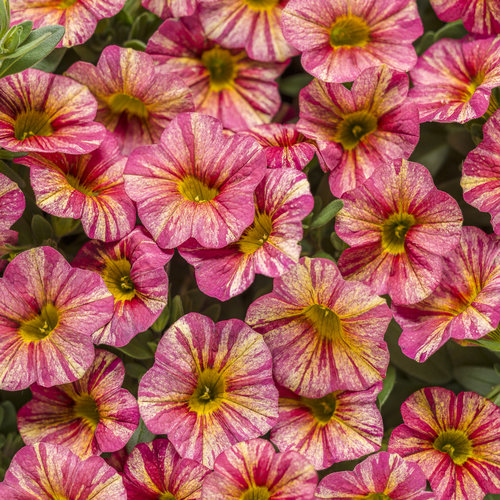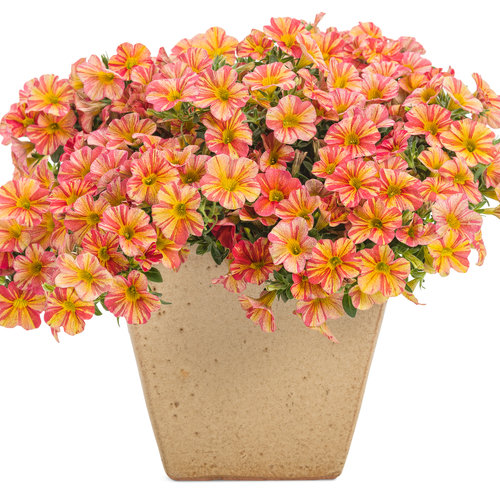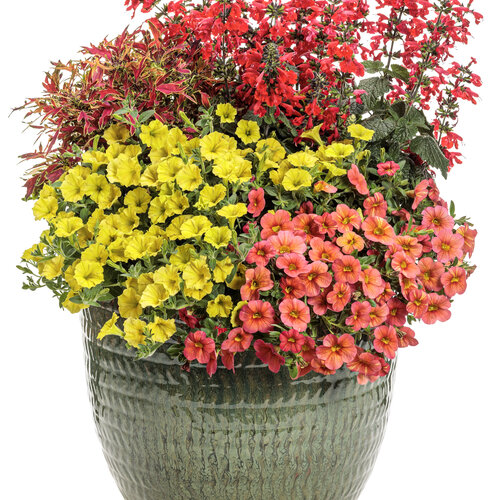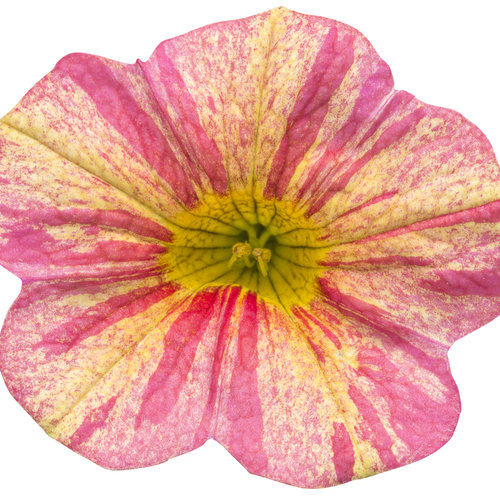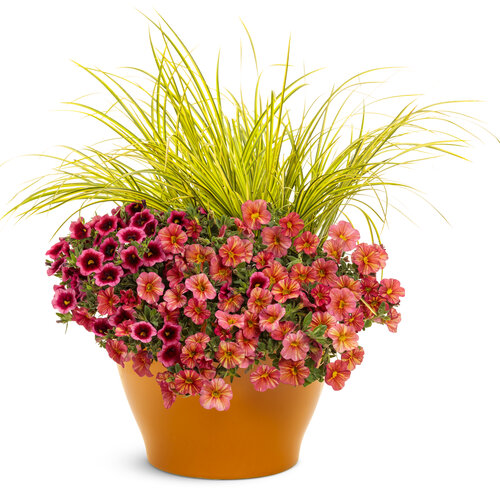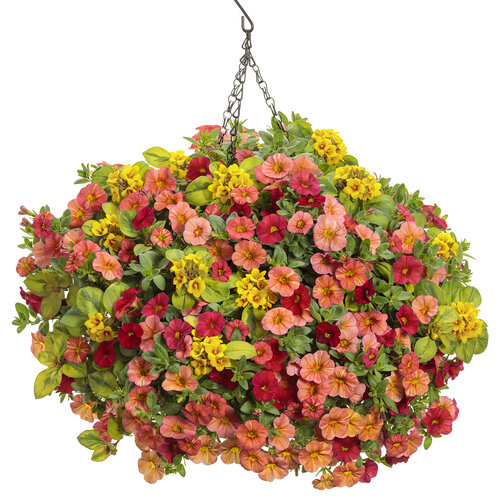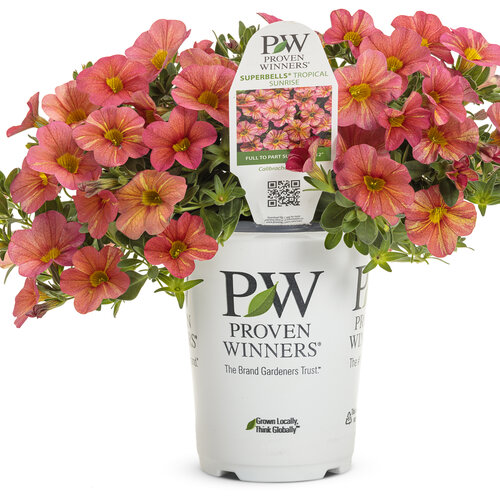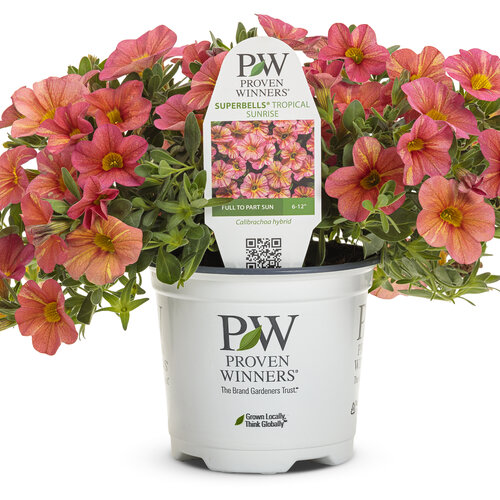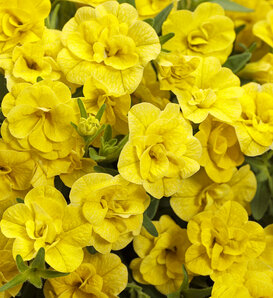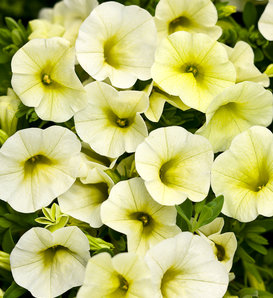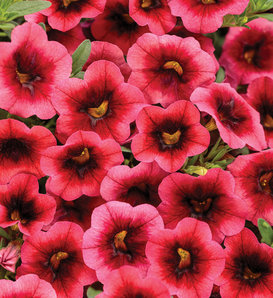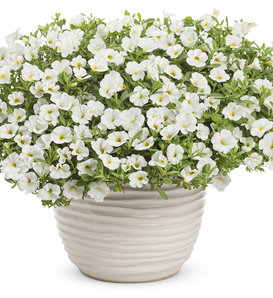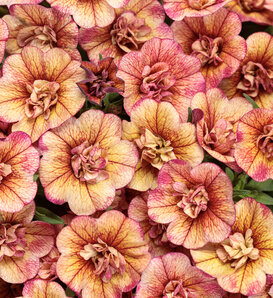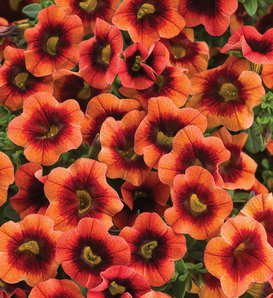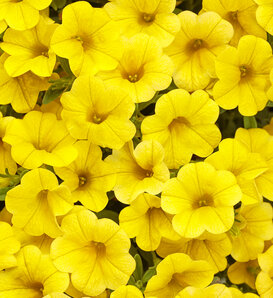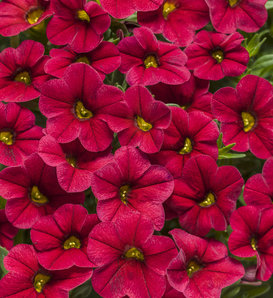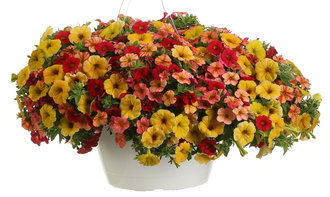I loved this variety when I grew it the past 2 years but couldn't find it this last summer. I grew another color instead which turned out to be quite fabulous but I want that Tropical Sunrise next year. So HELP, Proven Winners!!! Please get them to the markets in western NC for spring '22!
Superbells® Tropical Sunrise Calibrachoa hybrid
- Part Sun to Sun
- Spring
- Summer
- Fall
-
6 - 12 Inches8 - 12 Inches12 - 24 Inches15cm - 30cm20cm - 30cm30cm - 61cm
Features
By the time hard frost comes in fall, this plant will have showered your garden with thousands of blooms. The petite flowers grace cascading plants that are great in combinations, mono-hanging baskets and in raised beds with great drainage.
Best SellerContinuous Bloom or RebloomerLong BloomingFall InterestHeat TolerantDeadheading Not NecessaryAttracts:HummingbirdsCharacteristics
Plant Type:AnnualHeight Category:ShortGarden Height:6 - 12 Inches 15cm - 30cmTrails Up To:18 Inches 46cmSpacing:8 - 12 Inches 20cm - 30cmSpread:12 - 24 Inches 30cm - 61cmFlower Colors:PinkFlower Colors:RedFlower Colors:YellowFlower Shade:Variable streaks of yellow and pinkish-redFoliage Colors:GreenFoliage Shade:GreenHabit:Mounding TrailingContainer Role:SpillerPlant Needs
Light Requirement:Part Sun to SunThe optimum amount of sun or shade each plant needs to thrive: Full Sun (6+ hours), Part Sun (4-6 hours), Full Shade (up to 4 hours).
Maintenance Category:EasyBloom Time:Planting To Hard FrostHardiness Zones:9a, 9b, 10a, 10b, 11a, 11bWater Category:AverageNeeds Good DrainageUses:ContainerUses Notes:Calibrachoa need good drainage to perform well, so they are best grown in containers of all kiinds. Hanging baskets, window boxes and upright containers are all great for use with Superbells®. If you happen to have great drainage in your landscape beds or utilize raised beds, then Calibrachoa will do fine when planted in the landscape. However, most of us will have better luck when using containers.
Maintenance Notes:When planting Calibrachoa I often give the plants a slight trim, using a sharp pair of scissors or pruning shears. While not a necessary step, it will increase branching and may help your plants look even fuller.
Calibrachoa are usually easiest to grow in containers. If the roots are kept too wet it can lead to root rot diseases. In containers, allow the top of the soil to dry before watering again. If your plant is wilting even though the soil is still damp you likely have a root rot problem.
Calibrachoa can be fantastic in-ground plants, but only if they are planted in well-drained soil. Raised beds would be a good choice for planting Calibrachoa in the landscape. In the ground they shouldn't need much additional water unless conditions are very dry. Proper watering is key to growing good Calibrachoa.
The plants are low-maintenance with no deadheading needed. They will do best if fertilized on a regular basis. Calibrachoa can be sensitive to both high and low pH. If your plants have been growing for a while and then begin to look a bit tired and not so good there are several things to try. If the foliage is yellow there are two possible causes. If you haven't been fertilizing regularly they could simply be hungry and in need of fertilizer. Feed them using a well-balanced (look for something with an n-p-k ratio near 24-12-17) water soluble fertilizer. If you have been fertilizing regularly with a well-balanced fertilizer and the foliage is still turning yellow, it is probably because the pH range in your soil has gotten a bit high or low. The most common impact of this is that Iron can no longer be taken up by the plant, even if it is available in the soil.
The common form of Iron used in fertilizer is sensitive to pH changes. If you think pH is your problem you can either try to lower (or raise) the pH or you can simply apply Chelated Iron, which is available at a wider pH range and should help your plants turn green again. You may also be able to find Iron in a foliar spray (which means you spray it on the foliage rather than applying it to the soil) which can also help your plant turn nice and green again. Stop by your favorite garden center and they should be able to help you choose a product to use. Or use our Proven Winners Water Soluble fertilizer, which has the chelated iron.
As the season goes on the plants can sometimes just start to look open and not as good. This can happen even if they are being watered and fertilized correctly. Fortunately this is very simple to fix. Grab a sharp pair of scissors or pruning shears and give the plants an all over trim. This will cause them to branch out more and should stimulate new growth and flowering, especially if you fertilize right after trimming them back. Just like your hair looks a lot better after a trim, your plants often will too. You will sacrifice flowers for a few days, but the plants should shortly come back flowering more than ever. I will usually give my Superbells a trim back in late July or early August. Should your plants have a few unruly stems that are longer than everything else or sticking our oddly, you can trim these stems back at any time. Calibrachoa are very forgiving when it comes to trimming.
An application of fertilizer or compost on garden beds and regular fertilization of plants in pots will help ensure the best possible performance.
Superbells® Tropical Sunrise Calibrachoa hybrid 'INCALTRSUN' USPP 29,029 -
5241321Browse reviews from people who have grown this plant.
-
Judith Rose, North Carolina, United States, 4 years ago
-
This is absolutely one of my favorite superbells -- beautiful from afar and so interesting close up. Can't help but buy it every year, even when I swear I'll get something new! Does very well in my pots.
JYeag, Pennsylvania, United States, 5 years ago -
Picked up 3 of these in mid April as I was hoping this new variety would match the color and beauty of my favorite callie, Tequila Sunrise. I must say, while the color of Tropical Sunrise differs slightly from Tequila, the blooms are superior. The flowers on Tropical Sunrise are huge, nearly as large as those found on the Charm series petunias. The quantity of blooms is exceptional so far. The color is similar to Tequila but a bit more on the scarlet hue than the pink that my Tequila plants had. My neighbor has asked twice about these plants already and Tropical Sunrise has quickly become a favorite of mine. The plant is more sturdy and robust than the Tequila Sunrise plants I've had the past few years. Appears so far to be equally given to mounding and trailing so definitely recommend planting as a filler/spiller. Still too early to tell if Tropical Sunrise will endure the harsh Washington summer but if it can, I would have to rate this as a top 3 plant for me! Matthew Lamb, Frederick, MD
Matthew Lamb, Maryland, United States, 8 years ago
18 More Recipes- Creative CoutureRecipe
What you'll need:
-
1
-
1
-
1
-
1
-
- The Bright SideRecipe
What you'll need:
-
1
-
2
-
2
-
- Break of DayRecipe
What you'll need:
-
2
-
2
-
1
-
-



